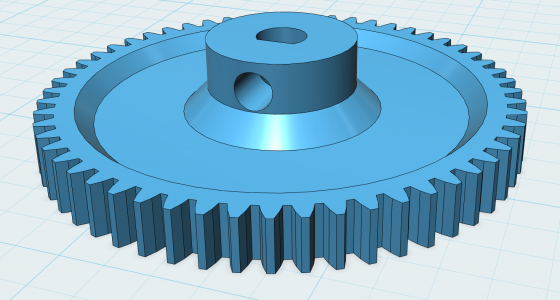I need a gear for the encoder on an Electronic Lead Screw, and I can't find one the proper size online for a reasonable cost, so I have decided to 3D print the gear in ABS and vapor polish it. The torque in the encoder will be tiny, so strength should not be an issue, even at 3000 RPM - the maximum speed of the lathe.
First of all, does anyone feel there is a better solution? I thought of Nylon, but that is not an option with my vendor.
Secondly, I am concerned about the set screw. ABS does not have the best layer adhesion, and threading it can produce poor results. A brass insert can produce great results, especially when the screw tends to set the insert deeper into the part. In this case, however, the force of the screw will tend to push an insert out of the plastic, producing a likely failure. I thought of drilling and tapping the shaft of the encoder, rather than the gear hub, but I don't much like that idea. A roll pin might be a better solution, but frankly, I don't like that much, either. I could have it printed in PETG, which has far better layer adhesion, but it won't be as smooth.
The gear is 56 tooth, module 1, 6 mm thick.

First of all, does anyone feel there is a better solution? I thought of Nylon, but that is not an option with my vendor.
Secondly, I am concerned about the set screw. ABS does not have the best layer adhesion, and threading it can produce poor results. A brass insert can produce great results, especially when the screw tends to set the insert deeper into the part. In this case, however, the force of the screw will tend to push an insert out of the plastic, producing a likely failure. I thought of drilling and tapping the shaft of the encoder, rather than the gear hub, but I don't much like that idea. A roll pin might be a better solution, but frankly, I don't like that much, either. I could have it printed in PETG, which has far better layer adhesion, but it won't be as smooth.
The gear is 56 tooth, module 1, 6 mm thick.


